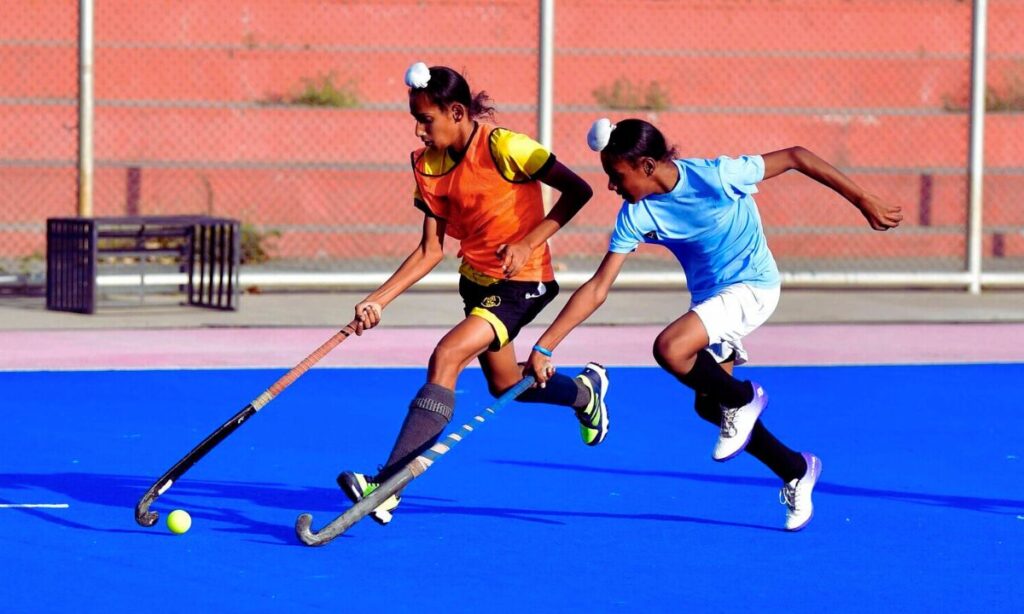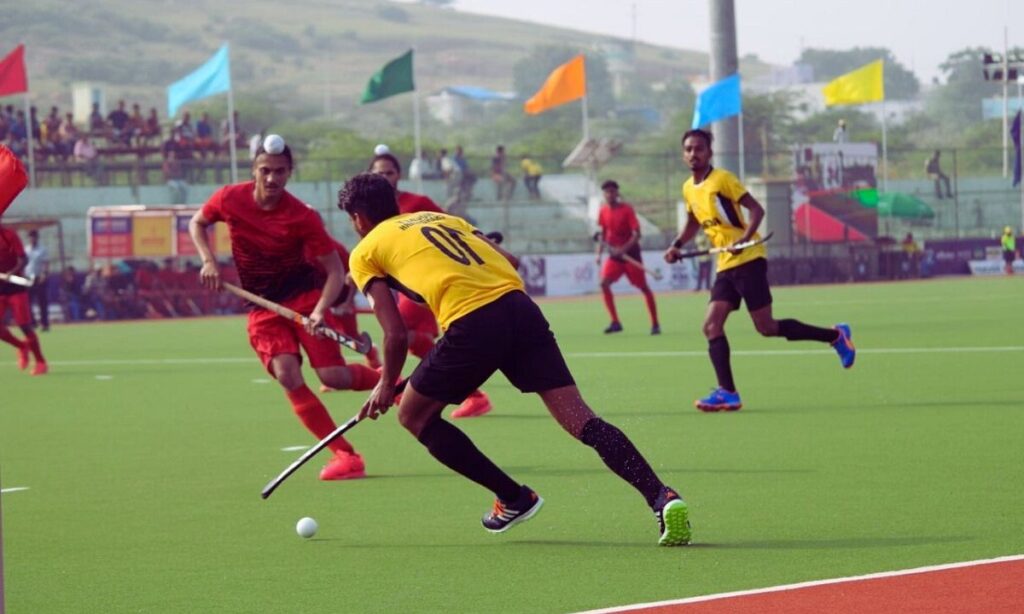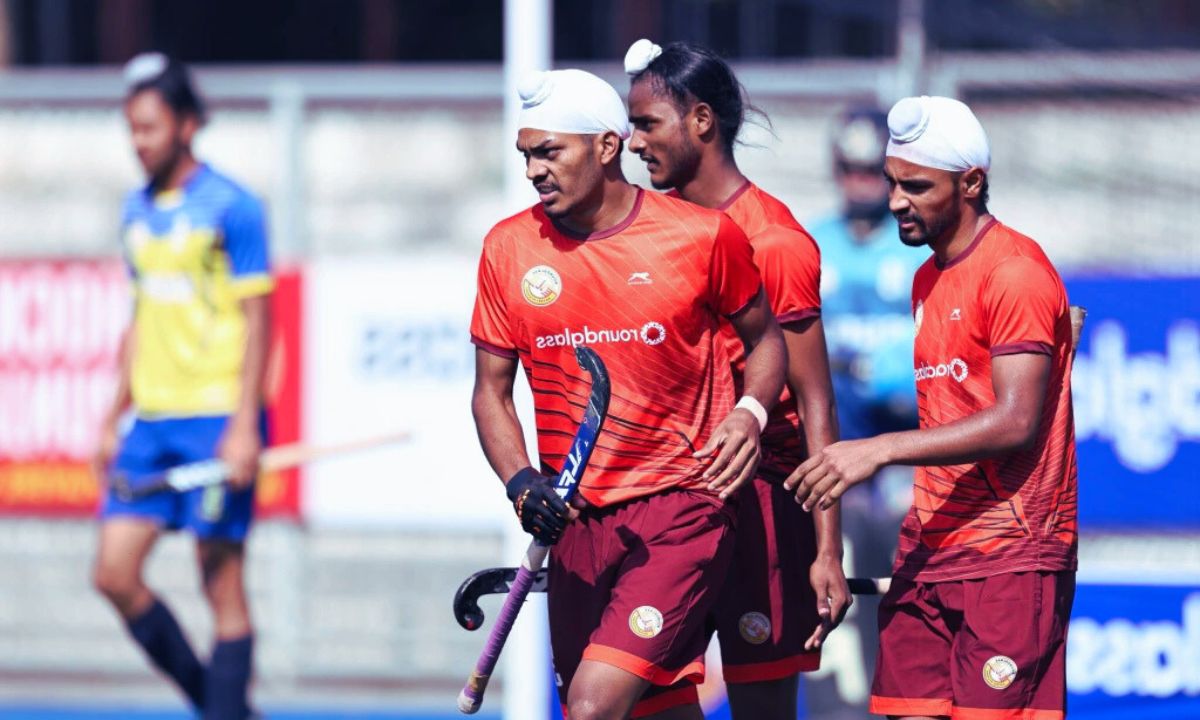Punjab was once celebrated as India’s hockey heartland—producing legendary players who dominated at the Olympics and World Cup. Seeing fewer Punjabi names in today’s national squad feels disheartening. That slip reveals a deeper issue: without fresh ambition or structural support, even the strongest legacy can dwindle. But in that gap hides opportunity—a chance to rekindle past passion and rebuild with smarter, human-centred strategies that serve modern youth.
Champions of the Past Stir Uneasy Memories
Names like Charanjit Singh, Prithipal Singh and Hardeep Grewal still evoke pride. Their stories feel tactile—the crack of a well-struck pass, the roar of a grateful crowd. Those memories are seductive in their emotional power, yet tinged with sadness now, as fewer kids pick up a stick from Ludhiana or Jalandhar. That disconnect between yesterday’s legends and today’s prospects deserves urgent attention before the spirit dims completely.
Crumbling Infrastructure Saps Passion
Hockey fields across schools and colleges in Punjab have vanished or degraded into disuse. Without proper AstroTurfs or maintained playing grounds, training becomes a chore. Young aspirants often give up halfway, returning to indoor games that feel more accessible. To revive passion, Amit Jain suggests investing in durable, low-maintenance AstroTurf strips on school grounds—small steps that could make training feel magical again.
Coaches and Corporate Backers Must Step In
Punjab’s industrial backbone and NRI diaspora offer untapped potential. Local businesses and former players could fund infrastructure or mentor young talent. Meanwhile, coaches like Gurteg Singh note that well-trained, qualified mentors are scarce. Sponsorship could attract talent, but without expert coaches guiding technique, endurance, mindset and character, raw athleticism alone won’t yield champions.

The Daily Cost—A Barrier Too High
Hockey gear, turf fees, travel—all create real financial burdens for middle‑class or rural families. When badminton costs less and needs only a hall and shuttle, hockey looks unaffordable. That financial pinch suffocates dreams before they bloom. Reducing equipment cost, offering gear subsidies or facilitating shared training schemes could lower walls and let more talent emerge from true merit, not background.
Youth Drowning in Schedules and Screens
Modern life squeezes free time. Academics, tuitions, screen time leave little space for sport. Young people often choose indoor games over outdoor team sports simply because they fit a busier schedule. To reverse this, schools could build daily practice into timetables, or reserve early evening slots for street‑style hockey. When routine and excitement meet, interest often follows.
Industrial Support Could Spark Renewal
Ludhiana’s factories and corporate houses might see hockey as more than recreation—an identity. By partnering with schools or sponsoring tournaments, companies could elevate the sport and gain employee pride in return. A simple setup: a roofed AstroTurf, evening matches for staff kids, and local role models promoting the benefits of sport and teamwork. Connect real people to the game, and the game comes alive again.
Emotional Power of Mentorship
When an Olympian like Hardeep Grewal meets an under‑resourced girl athlete in a village, something shifts. That emotional moment—a legend showing care—can ignite a spark. Mentorship programs pairing former stars with grassroots girls offer more than coaching. They deliver attention, encouragement, belief. That intangible support, that seductive emotional bond, forms the core of a revival.
Small‑Scale Tournaments Feed Big Dreams
Rather than waiting for national trials, Punjab needs local inter-school or neighbourhood tournaments offering real stakes: modest medals, local recognition, hopeful spectators. Let children taste success early. When a ten‑year‑old nets a goal under imagined stadium lights, that sensory thrill—the aching joy in muscles and heart—endures. Building those experiences builds players.
Modernizing Mindset Without Losing Roots
Revival doesn’t mean abandoning tradition. Modern coaching methods, data tracking, agile scheduling can coexist with folk wisdom, grit, and that Punjabi fighting spirit. When old coaches pass stories of past glory over chai to young players wearing sleek new shoes, you get a fusion that resonates. A generation that both respects roots and embraces innovation can reshape Indian hockey—not just for Punjab, but the entire nation.
Reviving Youth Hockey Means Mending Systems
Punjab’s hockey decline isn’t romantic drama—it’s structural neglect. Addressing it needs honest policy: revive grounds, subsidize costs, train coaches, attract corporate patronage, instill mentorship, and build small but meaningful leagues. When the system works from top to grassroots, the results shine—faster footwork, sharper reflexes, disciplined yet joyful play. That transformation is possible.
How Schools Can Be Hockey Crucibles
Instead of relegating sport to optional hours, schools should integrate aspirational hockey into curriculum. One match per week, mandatory turf practice for interested students, tournaments with adjoining community involvement. When parents see proud columns in local papers or social media, it shifts mindset. Schools become more than academic incubators—they produce spirited champions.
Punjab’s Hockey Revival Is National Renewal
Reviving hockey in Punjab matters not only for that state, but for Indian hockey’s ethos. Punjab was once the fountainhead of raw talent, drive and character. If its resurgence inspires similar recoveries in other regions, India can reclaim its world-class depth. When its children begin chasing a well‑hit ball again, India’s hockey pulse grows stronger everywhere.
Emotional Appeal That Touches Lives
This isn’t just sport. For many families, hockey is identity, dignity, escape from hardship. When a teenage girl lifts a stick instead of burdening domestic work, her spirit lifts as well. When village boys sneak practice under lamps after dusk, they breathe possibility. These are intimate, sensory moments—the sting of turf under fingers, the rush of adrenaline, the ache of growth—that remind readers how human and vital hockey can be.
Negative Threat Meets Positive Potential
Yes, hockey in Punjab faces decay, neglect and disinterest. But beneath that negative pressure lies pure positive energy if sparked right. The system need not crumble—it can rise again with intentional care. Once the sports grounds return, coaches mentor deeply, corporates support generously, and schools embed hockey in routine, Punjab can turn decline into dramatic resurgence.
A Power Word to Light the Comeback
This reform is not ordinary—it is a transformative revival. With focused investment in people and infrastructure, youth training becomes immersive. Lush green turfs glisten under floodlights. The crack of a harness shot echoes across a cheering school ground. That sort of vivid transformation changes not just how we play, but how we dream—and that power can redefine the sport.
Unlocking Sensory Joy of Hockey Again
Imagine a child chasing a puck on crisp turf, each step whispering against nylon socks, breath puffing in the cool morning air. The feel of the wooden stick, the satisfying thwack against ball, the roar as goal ripples into the net. That sensory joy is faded but retrievable, and when youth rediscover that thrill, passion returns—and Punjab blossoms again.
Building Future Champions from Grassroots
The goal is not to recreate past legends, but to let fresh ones emerge—those who combine Punjab’s time-honoured grit with modern finesse. Children who train from school through district, with supportive coaches, mentors, rivals—and occasional crowd glory. A solid pipeline means more players from Ludhiana, Amritsar or Jalandhar in India’s jerseys again. It begins with belief, accelerates with support, and materializes with nurturing.
A Personal Call to Action
If you’re a parent, coach, NRI, business owner or former player reading this—your role matters. Sponsor a patch of turf. Coach a weeknight drills session. Mentor one child. Donate used gear. Volunteer at school tournaments. When individuals commit small acts, those actions ripple wider. If even a handful of champions rise again, they will say: someone believed in me.
Closing Vision: Punjab Rising
Punjab’s hockey isn’t dead—it’s dormant. That lingering potential must be awakened by structured care, affordable access, emotional connection, and visible pathways. Bringing back pride, showing national teams with Punjabi representation, filling stadiums with brass bands chanting chants—those are possible scenes in coming years. With thoughtful revival, Punjab can reclaim its hockey throne—and inspire a wider resurgence across India.
Bridging the Gap Between Rural and Urban Talent
One of the unspoken barriers in Punjab hockey’s revival is the divide between rural talent and urban opportunities. Countless young players in villages demonstrate raw athleticism and hunger, but lack exposure to professional environments. Conversely, city schools may have the infrastructure but not the same fire. Bridging this gap through regional scouting camps and cross-institutional training programs can unleash untapped potential across the state.
Reimagining the Role of Sports Teachers
In many schools across Punjab, physical education is treated like a side subject. Sports teachers are often underpaid and overworked. Yet they are the first point of contact between children and hockey. Empowering them through proper training, recognition, and resources can spark a bottom-up change. When teachers feel valued and inspired, they pass that energy to their students—and that’s where the revival truly begins.
Building Community Hockey Centers
While large stadiums take years and crores to build, small community hockey centers are cost-effective and highly impactful. These centers can serve as after-school hubs where kids come to train, play, and socialize. Managed by local volunteers and sponsored by NGOs or alumni associations, these hubs can bring hockey back to the heart of Punjab’s neighborhoods—one turf at a time.
Punjab’s Diaspora Must Step In
Punjab has a massive diaspora in Canada, UK, and the US—many of whom are former players or sport enthusiasts. Tapping into this emotional connection with their homeland can bring valuable support. Donations for gear, sponsorships for local tournaments, or even summer coaching clinics during NRI visits could be game-changing. Hockey could become a shared mission that reunites overseas Punjabis with the land they love.
Digital Tools Can Multiply Impact
Technology shouldn’t be seen as a rival to sport—it can be an enabler. Creating mobile apps that track training progress, offer basic drills, and announce local competitions can engage tech-savvy youth. Video coaching platforms can bring world-class tips to the remotest corners. With smartphones nearly everywhere, digitalizing hockey training is not only possible but necessary to make Punjab hockey relevant for this generation.
Celebrating Female Hockey Talent
For too long, Punjab hockey has focused mostly on male athletes. But the fire among young girls is undeniable—and deserves attention. By organizing exclusive girls’ leagues, mentoring female athletes, and highlighting success stories, Punjab can become a leader in gender-inclusive sport. This isn’t just about equality; it’s about doubling the talent pool and doubling the pride.
Creating Emotional Incentives for Players
Beyond medals and certificates, emotional recognition matters. Hosting award nights where local hockey heroes are celebrated, featuring young players in newspapers, or showcasing their stories on school walls gives children a sense of worth. These emotional hooks create long-lasting connections between kids and the game. When youth feel seen and appreciated, they push themselves harder.
Integrating Hockey into Cultural Events
In Punjab, festivals are vibrant and deeply rooted in identity. Including hockey matches or demonstrations during Baisakhi, Lohri, or local fairs can naturally reintroduce the sport into public memory. These events bring large crowds—and watching a skillful hockey game amidst dhols and bhangra could create lasting impressions. The goal is simple: make hockey visible again.
Role Models Must Return to the Fore
Retired players often fade into the background—but their stories and presence are powerful motivators. Organizing annual ‘Legends vs Juniors’ matches, or inviting them to training camps, can create bonds that inspire. Imagine a teenage boy shaking hands with a former Olympian in his village—it’s a moment that could define his life. Punjab hockey must reconnect its roots with its future.
Addressing the Fear of Failure
Many young players shy away from competitive sports due to the fear of judgment or not making the cut. A nurturing environment that encourages risk-taking and accepts failure as part of growth is essential. Coaches and parents need to cultivate emotional resilience, so players aren’t afraid to fall—and rise again. Punjab Inter-School Rivalries Fuel Growth
Reviving traditional rivalries between schools in cities like Amritsar, Patiala, and Ludhiana can add excitement. Inter-school tournaments with regional finals can build pride and draw community support. Bragging rights in hockey could become a matter of school identity, motivating students to train harder and be part of something bigger than themselves.
Late Bloomers Need a Second Chance
Not every champion starts young. Some players discover their talent in their teens but miss out due to rigid selection windows. Punjab hockey needs flexible pathways for late bloomers—whether through open tryouts, walk-in camps, or online skill submissions. Everyone deserves a fair shot, no matter when they find their spark.
The Power of Storytelling
Documentaries, podcasts, and social media stories showcasing real journeys—from dusty village grounds to national arenas—can inspire thousands. Telling these stories with honesty and heart creates emotional momentum. Punjab hockey isn’t just about goals and sticks—it’s about dreams, struggles, and the triumph of spirit. That’s what connects with the masses.
Bringing Hockey into Primary Schools
The earlier children are exposed to a sport, the deeper their connection grows. Hockey should not be reserved for high school. Simple drills, fun obstacle courses, and skill-based games can introduce the sport at age 6 or 7. Once kids associate hockey with fun and movement, it becomes part of their identity for life.
A Future Worth Fighting For
Reviving Punjab hockey isn’t just about recreating a glorious past—it’s about building a future where children from every mohalla dream big. Where talent is nurtured, not wasted. Where success is shared, and effort is honoured. This is a chance for Punjab to lead India once again—not just in sport, but in spirit, resilience, and pride. The crown may have slipped, but it’s still within reach.
Reclaiming Forgotten Fields
Across Punjab, countless hockey fields once thrived with activity. Now, many of them lie abandoned—overgrown, ignored, and nearly forgotten. These spaces hold history and memories that deserve to be brought back to life. Revitalizing these grounds with fresh turf, lighting, and seating can serve as both a practical revival and a symbolic restoration of Punjab’s commitment to the sport. Reclaiming these places is not just about infrastructure—it’s about rekindling a lost relationship.

Involving Local Governance in the Revival
Municipal bodies and local panchayats can play a transformative role in bringing hockey back to communities. When village councils or city wards invest in local tournaments, allocate budgets for school sports kits, or fund turf maintenance, the change becomes more permanent. Punjab hockey needs grassroots-level attention—not just from coaches and players, but from the very institutions that shape community life.
Media Coverage Needs a Revival Too
While cricket dominates headlines, local media must take responsibility to spotlight hockey again. Regional news outlets, sports magazines, and Punjabi TV channels can dedicate airtime to youth tournaments, player interviews, and game analysis. When media shines a light on the sport, it inspires conversations in homes, schools, and among the next generation of fans and players.
Emotional Connection Through Nostalgia
Older generations often share stories of village tournaments, handmade sticks, and late-night practice sessions. These memories are powerful tools. By organizing events that combine cultural nostalgia—like folk music, food fairs, and traditional games—with hockey, communities can relive that passion together. This blend of memory and movement has the power to reignite a deep emotional connection with the sport.
Reward Systems Can Spark Motivation
Incentives, when done right, can work wonders. Even small scholarships, monthly stipends for consistent performance, or recognition in school assemblies can motivate players. It’s not always about large-scale sponsorships—sometimes, the simplest reward, like a new pair of shoes or a certificate in front of peers, can fuel the hunger to improve. Punjab hockey needs systems that acknowledge effort, not just victory.
Rebuilding Parental Confidence in Sports
Many parents, especially in rural areas, fear that sports like hockey won’t provide their children a secure future. Changing this perception is critical. Schools and sports authorities must actively communicate scholarship opportunities, job pathways through sports quotas, and success stories of former players who built meaningful lives through hockey. When parents begin to believe, they will encourage rather than resist.
The Clock is Ticking—Act Now or Lose Forever
Every year that goes by without serious investment in Punjab hockey pushes the legacy closer to extinction. Talented children shift their dreams elsewhere, schools divert resources to other sports, and a state once known as India’s hockey heartland risks losing that identity altogether. This isn’t just a matter of sport—it’s a matter of pride, heritage, and future. The time to act is now, before this golden chapter fades into just another forgotten history.

